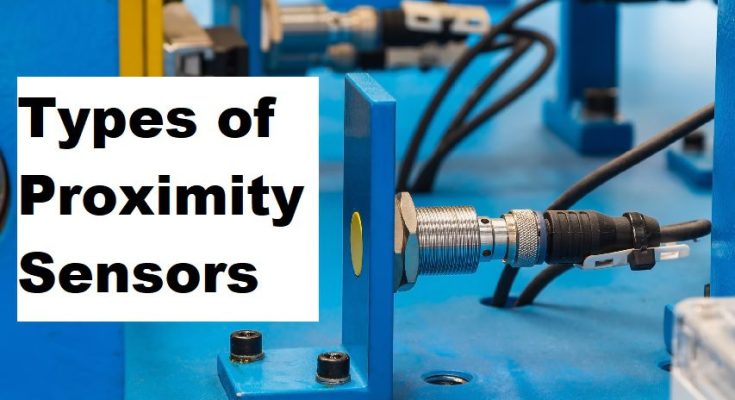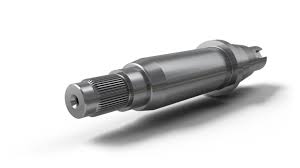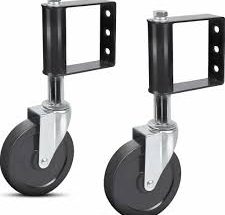The advent of proximity sensors in consumer electronics has markedly transformed our interaction with technology. These sensors, embedded in various devices, have become critical components in modern electronics, elevating functionality and user experience.
In this exploration, we delve into the vital role of proximity sensors, examining how they enable more brilliant, more intuitive features in everyday electronics. Their impact is profound, reshaping how we utilize and perceive our electronic devices.
Understanding Proximity Sensors
Proximity sensors are a cornerstone in modern consumer electronics, offering touchless object detection capabilities.
Here’s a quick overview of how these sensors operate:
-
Electromagnetic Fields
Utilized primarily in inductive sensors, they detect metallic objects through changes in electromagnetic fields.
-
Beams of Radiation
Often found in photoelectric sensors, they use light (usually infrared) to detect the presence or absence of objects.
-
Sound Waves
Ultrasonic sensors employ sound waves to measure distance and identify objects.
-
Capacitance Changes
Capacitive sensors detect both metallic and non-metallic materials by sensing alterations in capacitance.
Each type contributes uniquely to energy conservation and enhanced usability in electronic devices.
Exploring the Varieties of Proximity Sensors
Proximity sensors come in various forms, each suited for specific functions in consumer electronics. Understanding these types offers insight into how they enhance device capabilities:
-
Inductive Proximity Sensors
Detect metallic objects using electromagnetic induction. Ideal for applications requiring robust, metal-sensing capabilities.
-
Capacitive Proximity Sensors
These sensors are versatile, detecting both metallic and non-metallic materials through changes in capacitance, making them suitable for a wide range of applications.
-
Ultrasonic Proximity Sensors
Employ sound waves for measuring distances and detecting objects. They are particularly effective in applications where precision distance measurement is crucial.
-
Photoelectric Proximity Sensors
Utilize light beams, often infrared, to ascertain the presence and distance of objects. Their use is widespread in devices needing accurate object detection and distance assessment.
Proximity Sensors in Action: Applications in Consumer Electronics
Proximity sensors are not just components but the unsung heroes in our daily electronic devices.
Here’s how they make a difference:
-
Smartphones
Automatically dimming screens near the ear during calls enhances privacy and battery life.
-
Laptops and Tablets
Initiating sleep mode when closed, conserving energy, and extending device longevity.
-
Automobiles
Assisting in parking and collision avoidance systems, improving safety and driver convenience.
-
Home Automation Systems
Enabling bright lighting and security systems to react to human presence, increasing efficiency and security.
-
Wearable Devices
Adjusting display brightness and information shown based on the proximity to the user, optimizing battery usage and readability.
-
Gaming Consoles and VR Headsets
Enhancing user interaction by detecting hand or body movements, creating more immersive experiences.
Each of these applications underscores the transformative impact of proximity sensors in making our electronic gadgets more innovative and responsive to our needs.
The Range and Sensitivity of Proximity Sensors
In consumer electronics, the performance of proximity sensors is primarily influenced by two critical factors: range and sensitivity. These elements determine the sensor’s effectiveness and adaptability in various applications.
-
Range
Refers to the maximum distance a sensor can reliably detect an object. This range must be tailored for different electronic devices to suit specific functions and environments.
-
Sensitivity
This denotes the sensor’s ability to detect minute changes or the presence of objects with varying properties. High sensitivity is essential for precision and accuracy in responsive electronics.
Each aspect is critical in ensuring proximity sensors deliver optimal performance in consumer electronics, adapting to the demands of diverse applications and environments.
Innovations and Future Trends
The landscape of proximity sensors in consumer electronics is evolving rapidly, driven by groundbreaking innovations. These advancements are shaping the future of technology in several compelling ways:
-
Smarter Interfaces
Enhanced sensor technologies enable more intuitive and responsive user interfaces in devices, making interactions seamless and more efficient.
-
Energy Efficiency
Next-generation sensors are being developed to optimize power consumption, contributing to longer battery life and eco-friendly electronics.
-
Advanced Security Features
Innovations in sensor technology are leading to more secure and reliable authentication methods in personal devices.
-
Integration with IoT
Proximity sensors are becoming pivotal in the Internet of Things (IoT), facilitating more innovative home and industrial automation systems.
-
Healthcare Applications
Emerging applications in healthcare gadgets like wearable technology use proximity sensors for more accurate health monitoring and diagnostics.
These trends highlight proximity sensors’ growing importance and potential, signaling an exciting future for consumer electronics.
Navigating Challenges and Embracing Opportunities with Proximity Sensors
As the application of proximity sensors in consumer electronics continues to expand, it’s essential to acknowledge the challenges and opportunities accompanying their development and implementation. This dual perspective offers a holistic view of the sensor technology landscape:
-
Technical Challenges
Overcoming limitations in sensor range, accuracy, and interference from external sources remains a primary focus for developers. Innovating in these areas is crucial for advancing sensor capabilities.
-
Cost and Scalability
Balancing the cost-effectiveness of sensors with their performance is essential, especially as demand for affordable, innovative electronics grows.
-
Privacy and Security
As sensors become more prevalent in personal devices, addressing privacy concerns and verifying data security is paramount.
-
Opportunities in Diverse Markets
Beyond traditional consumer electronics, proximity sensors find promising applications in emerging markets like automotive, robotics, and smart city infrastructures.
-
Sustainable Development
Integrating sensors in a way that supports sustainable manufacturing practices and promotes environmental responsibility is a growing priority.
Understanding these challenges and opportunities is vital to harnessing the full potential of proximity sensors, paving the way for more innovative, efficient, and user-friendly electronics.
Harnessing the Power of Proximity: A Concluding Insight
As we reach the end of our exploration, it’s clear that proximity sensors are not just components but the catalysts of innovation in consumer electronics. These sensors have transcended their essential functions to become fundamental in realizing the vision of intelligent, user-centric devices. Their role in improving energy efficiency, elevating user experiences, and introducing groundbreaking features marks a significant milestone in the evolution of intelligent electronics. The transformative impact of proximity sensors underscores their growing significance in molding the future of technology.
Engage with the Future: Discover More about Proximity Sensors
Misumi offers a comprehensive range of sensor solutions for those interested in exploring proximity sensors and their applications in consumer electronics; visit for more details. Dive into the world of advanced sensor technology and be a part of the evolving electronics landscape.
Experience the future of consumer electronics. Contact us to learn more about our proximity sensor solutions and bring intelligent features to your devices.



